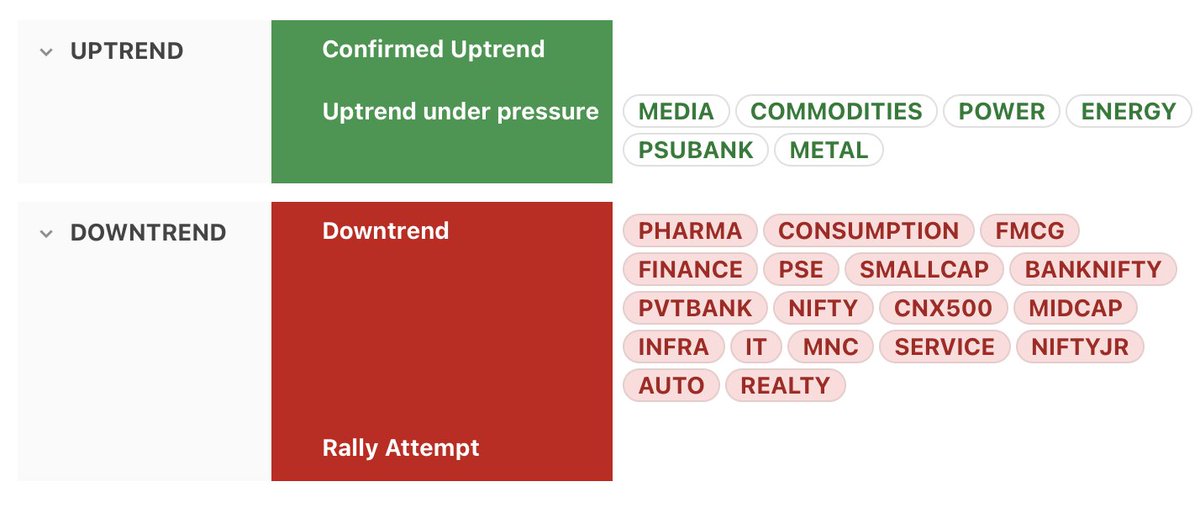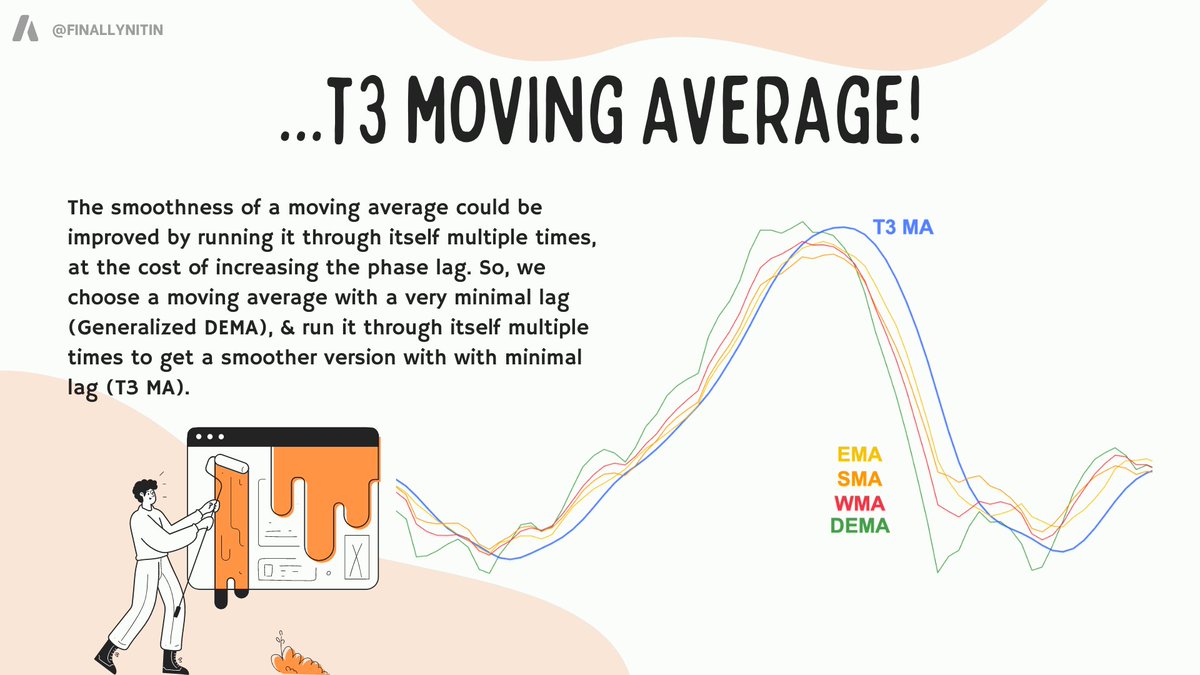#WeeklyIndexCheck CW09/2022
Market Quadrant:
⦿ Trend: Downtrend
⦿ Momentum: Negative & worsening
⦿ Breadth: Oversold
⦿ Bias: Bearish
Market Quadrant:
⦿ Trend: Downtrend
⦿ Momentum: Negative & worsening
⦿ Breadth: Oversold
⦿ Bias: Bearish

Trend
⦿ Most major indices (including Nifty, CNX500, Midcap, Smallcap) stay in downtrend.
⦿ Auto & Realty join the red list this week
⦿ Metals, PSUbank, Power & Energy stay in uptrend under pressure.
⦿ Most major indices (including Nifty, CNX500, Midcap, Smallcap) stay in downtrend.
⦿ Auto & Realty join the red list this week
⦿ Metals, PSUbank, Power & Energy stay in uptrend under pressure.

Momentum
⦿ No index is having positive momentum
⦿ Most indices (including Nifty, CNX500, Midcap, Smallcap) are showing negative & worsening momentum
⦿ Only Energy, IT, Metal & PSE are having negative but improving momentum
⦿ No index is having positive momentum
⦿ Most indices (including Nifty, CNX500, Midcap, Smallcap) are showing negative & worsening momentum
⦿ Only Energy, IT, Metal & PSE are having negative but improving momentum

Market Breadth
Higher timeframes stay bearish, lower timeframes stay oversold.
⦿ 9% → 14% above 20 SMA (oversold)
⦿ 12% → 13% above 50 SMA (oversold)
⦿ 30% → 31% above 150 SMA (bearish bias)
⦿ 36% → 37% above 200 SMA (bearish bias)
Higher timeframes stay bearish, lower timeframes stay oversold.
⦿ 9% → 14% above 20 SMA (oversold)
⦿ 12% → 13% above 50 SMA (oversold)
⦿ 30% → 31% above 150 SMA (bearish bias)
⦿ 36% → 37% above 200 SMA (bearish bias)

% of stocks above/below 20& 50MA
⦿ The Ratio between stocks above & below 50MA is now 0.17, while that for 20MA is 0.17.
⦿ The 10-day cumulative ratio for stocks above 50MA is 0.15.
⦿ A value >2 is good for swing trades on the long side.
⦿ The Ratio between stocks above & below 50MA is now 0.17, while that for 20MA is 0.17.
⦿ The 10-day cumulative ratio for stocks above 50MA is 0.15.
⦿ A value >2 is good for swing trades on the long side.

20% up/down in 5 days
The number of stocks up 20% in past 5 days is back to being greater than those down 20% in 5 days. Such brief bullish upthrusts are trading oppurtunites in the very short-term.
The number of stocks up 20% in past 5 days is back to being greater than those down 20% in 5 days. Such brief bullish upthrusts are trading oppurtunites in the very short-term.

Stockbee Market Monitor
On a modified Stockbee market monitor, number of stocks 25% plus quarter stays less than 25% down quarter for second consecutive week.
Both 13% up in 34 days, & up 25% up in a month have stayed red, which shows bearish phase in shorter-term as well.
On a modified Stockbee market monitor, number of stocks 25% plus quarter stays less than 25% down quarter for second consecutive week.
Both 13% up in 34 days, & up 25% up in a month have stayed red, which shows bearish phase in shorter-term as well.

Primary Breadth Ratio
Overall, the market is bearish, as the number of stocks up 25% plus in a quarter is less than that down 25% plus in a quarter.
The ratio between the two is the primary breadth ratio, which is now less than 1.
Overall, the market is bearish, as the number of stocks up 25% plus in a quarter is less than that down 25% plus in a quarter.
The ratio between the two is the primary breadth ratio, which is now less than 1.

That’s all for this week. If you'd like to read this as a newsletter, find it here:
world.hey.com/nitinranjan/we…
world.hey.com/nitinranjan/we…
• • •
Missing some Tweet in this thread? You can try to
force a refresh






















